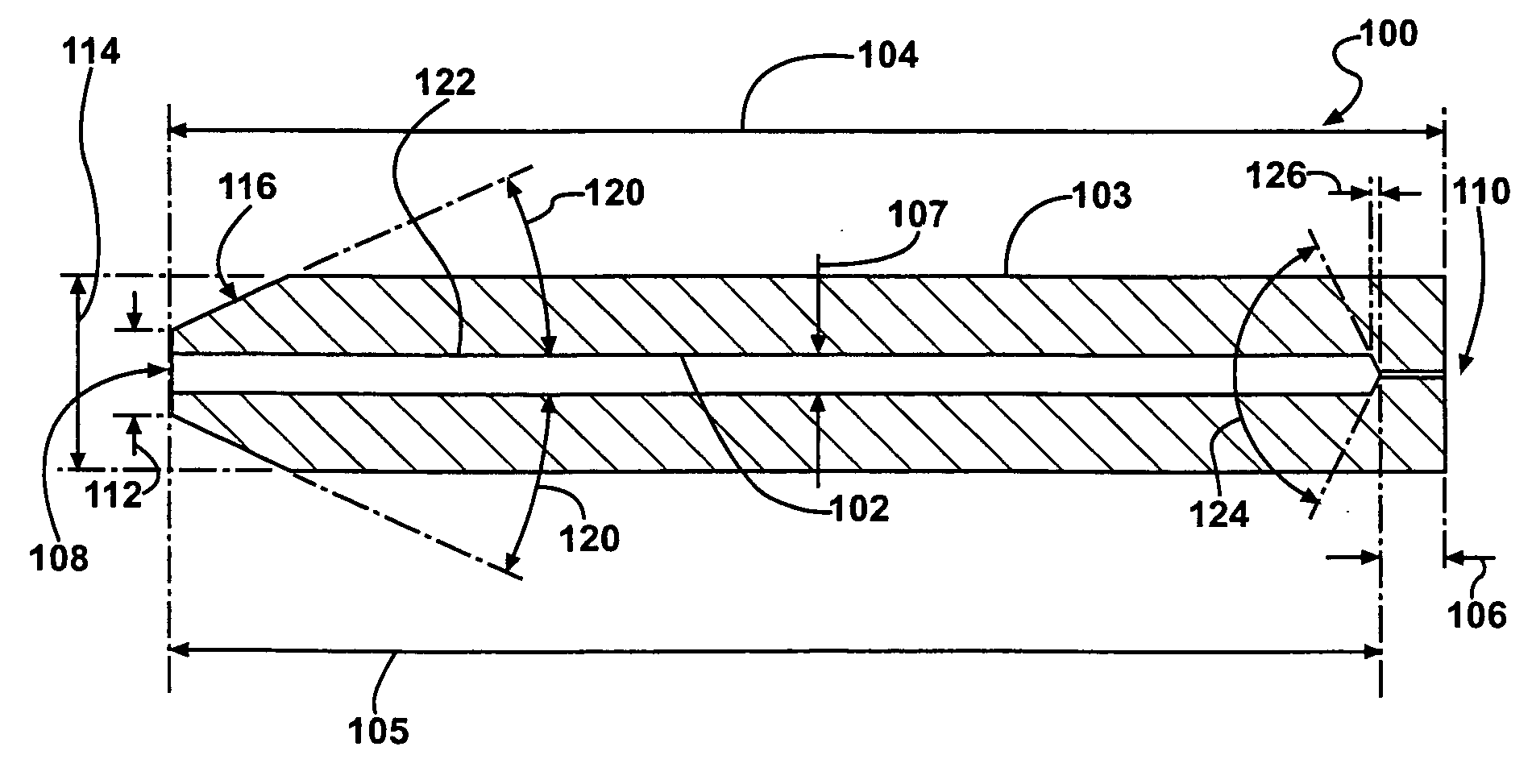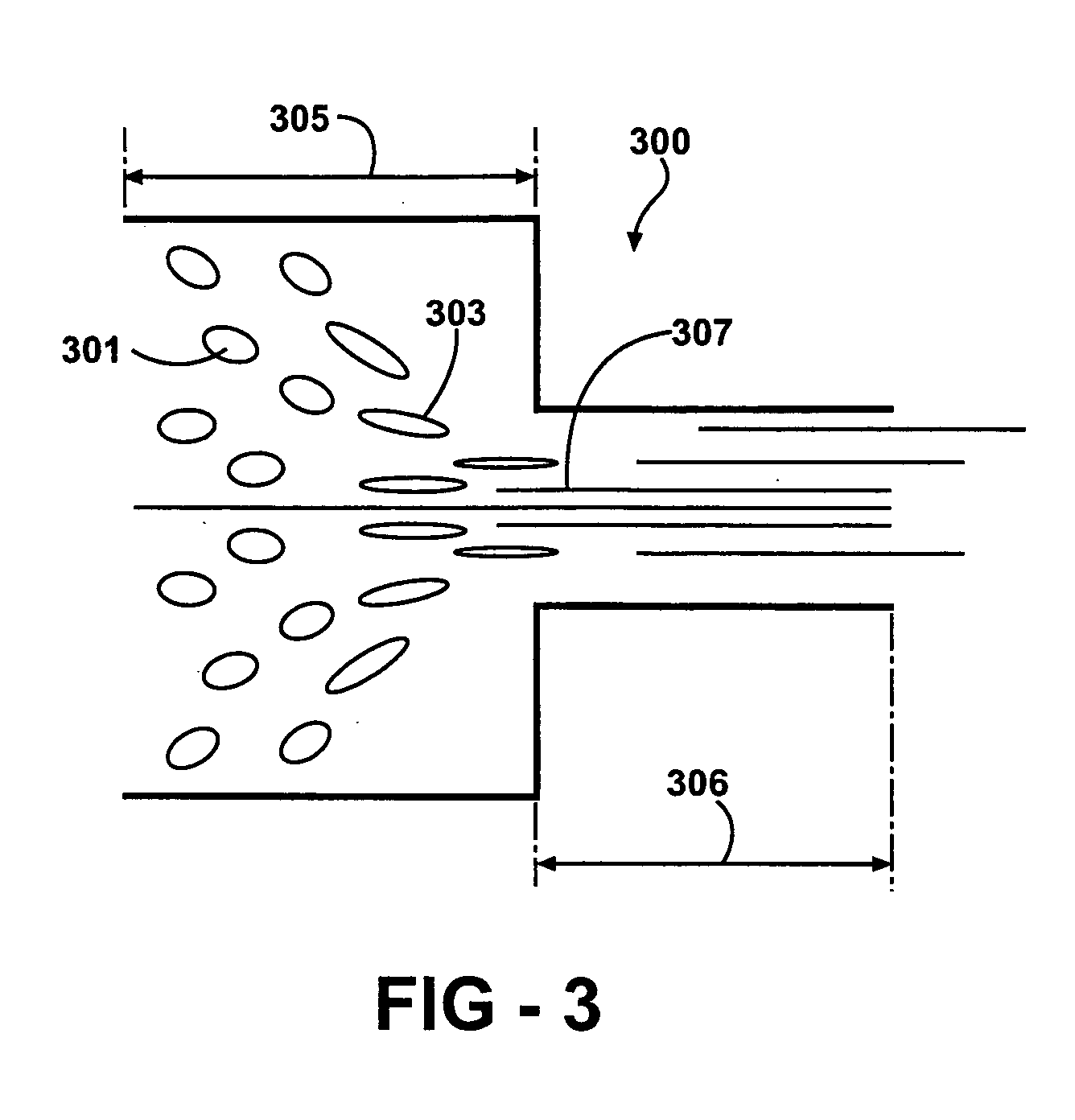Process for forming polymeric micro and nanofibers
a polymer micro- and nanofiber technology, applied in the field of polymer fibers, can solve the problems of inconvenient, expensive, environmental and other problems, and achieve the effect of improving the quality of the polymer
- Summary
- Abstract
- Description
- Claims
- Application Information
AI Technical Summary
Benefits of technology
Problems solved by technology
Method used
Image
Examples
example 1
[0110] Materials: Polyethylene (melt index=36) and poly(methyl methacrylate) (average Mw, 120,000) are purchased from Aldrich. PTFE powder in ultra high molecular weight (Dupont TeflonTM 7A) form is obtained from Polysciences, Inc. Low molecular weight PTFE (Dyneon TF9021) is obtained from 3M.
example 2
[0111] Characterization: Scanning electron micrographs are obtained on a JSM 5400 instrument and also a JEOL 6700F. Differential scanning calorimetry thermal analyses are obtained with a TA Instruments SDT2960 at heating rate of 10° C. / min under argon atmosphere. Raman spectra are collected on individual fibers by means of a Dilor XY micro-Raman spectrometer with 514 nm laser excitation.
example 3
[0112] Using either nitrogen or argon, DuPont Teflon 7A PTFE, an ultra high molecular weight granular powder with an average particle size of 35 microns S. (Ebnesajjad, Fluoroplastics, Volume 1: Non-Melt Processible Fluoroplastics (Plastics Design Library, Norwich, N.Y., 2000), Dupont Teflon PTFE 7A Granular Compression Molding Resin Product Information (http: / / www.teflon.com / Teflon / downloads / pdf / h61664-1.pdf) is jet blown into fibers as long as 500 microns. The fibers are jet blown into an inert atmosphere that is exhausted into a fume hood.
PUM
| Property | Measurement | Unit |
|---|---|---|
| diameter | aaaaa | aaaaa |
| length | aaaaa | aaaaa |
| diameter | aaaaa | aaaaa |
Abstract
Description
Claims
Application Information
 Login to View More
Login to View More - R&D
- Intellectual Property
- Life Sciences
- Materials
- Tech Scout
- Unparalleled Data Quality
- Higher Quality Content
- 60% Fewer Hallucinations
Browse by: Latest US Patents, China's latest patents, Technical Efficacy Thesaurus, Application Domain, Technology Topic, Popular Technical Reports.
© 2025 PatSnap. All rights reserved.Legal|Privacy policy|Modern Slavery Act Transparency Statement|Sitemap|About US| Contact US: help@patsnap.com



